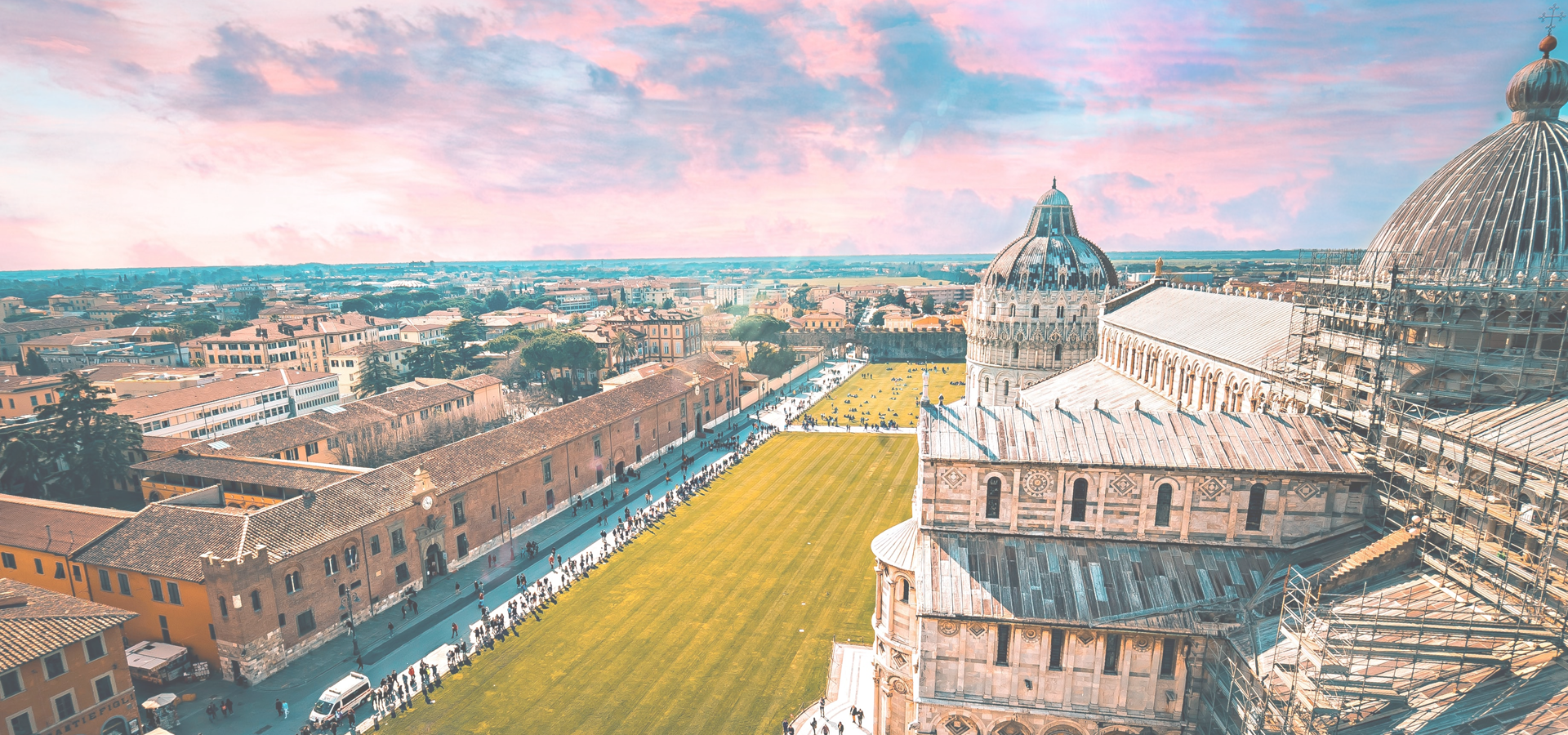Volterra, Province of Pisa, Tuscany Region, Italy
🇮🇹 Volterra is a walled mountaintop town in the Tuscany region of Italy. Its history dates from before the 8th century BC and it has substantial structures from the Etruscan, Roman, and Medieval periods.
History Volterra, known to the ancient Etruscans as Velathri or Vlathri and to the Romans as Volaterrae, is a town and comune in the Tuscany region of Italy. The town was a Bronze Age settlement of the Proto-Villanovan culture, and an important Etruscan centre (Velàthre, Velathri or Felathri in Etruscan, Volaterrae in Latin language), one of the "twelve cities" of the Etruscan League.
The site is believed to have been continuously inhabited as a city since at least the end of the 8th century BC. It became a municipium allied to Rome at the end of the 3rd century BC. The city was a bishop's residence in the 5th century, and its episcopal power was affirmed during the 12th century. With the decline of the episcopate and the discovery of local alum deposits, Volterra became a place of interest of the Republic of Florence, whose forces conquered Volterra. Florentine rule was not always popular, and opposition occasionally broke into rebellion. These rebellions were put down by Florence.
When the Republic of Florence fell in 1530, Volterra came under the control of the Medici family and later followed the history of the Grand Duchy of Tuscany.
Culture The main events that take place during the year in Volterra are • Volterra gusto • Volterra arte • Volterra teatro.
Tourist Industry • Roman Theatre of Volterra, 1st century BC, excavated in the 1950s • the Roman amphitheatre was discovered in 2015 and has been excavated over the succeeding years • Piazza dei Priori, the main square, a fine example of medieval Tuscan town squares • Palazzo dei Priori, the town hall located on Piazza dei Priori, construction begun in 1208 and finished in 1257 • Pinacoteca e museo civico di Volterra (Art Gallery) in Palazzo Minucci-Solaini. Founded in 1905, the gallery consists mostly of works by Tuscan artists from 14th to 17th centuries. Includes a Deposition by Rosso Fiorentino. • Etruscan Acropolis and Roman Cistern. The acropolis on the citadel dates to the 8th century B.C., while the cistern is from the 1st century B.C. • Volterra Cathedral. It was enlarged in the 13th century after an earthquake. It houses a ciborium and some angels by Mino da Fiesole, a notable wood Deposition (1228), a masterwork of Romanesque sculpture and the Sacrament Chapel, with paintings by Santi di Tito, Giovanni Balducci and Agostino Veracini. In the centre of the vault are fragments of an Eternal Father by Niccolò Circignani. Also noteworthy is the Addolorata Chapel, with a terracotta group attributed to Andrea della Robbia and a fresco of Riding Magi by Benozzo Gozzoli. In the nearby chapel, dedicated to the Most Holy Name of Jesus, is a table with Christ's monogram, allegedly painted by Bernardino of Siena. The rectangular bell tower is from 1493. • Volterra Baptistery of San Giovanni, built in the second half of the 13th century. • Fortezza Medicea (Medicean Fortress), built in the 1470s, now a prison housing the noted restaurant, Fortezza Medicea restaurant. • Guarnacci Etruscan Museum, with thousands of funeral urns dating back to the Hellenistic and Archaic periods. Main attractions are the bronze statuette "Ombra della sera" (lit. '"Shadow of the Night"'), and the sculpted effigy, "Urna degli Sposi" (lit. '"Urn of the Spouses"') of an Etruscan couple in terra cotta. • The Etruscan Walls of Volterra, including the well-preserved Walls of Volterra (3rd-2nd centuries BC), and Porta Diana gates. • The Medici Villa di Spedaletto, outside the city, in direction of Lajatico • There are excavations of Etruscan tombs in the Valle Bona area. • Volterra Psychiatric Hospital, Founded in 1888 until 1978, it was reopened for public and will be once more used for psychiatric purposes.
Transport Volterra has a station on the Cecina-Volterra Railway, called "Volterra Saline – Pomarance" due to its position, in the frazione of Saline di Volterra.
Europe/Rome/Province_of_Pisa

Volterra has a population of over 10,519 people. Volterra also forms part of the wider Pisa Province which has a population of over 421,642 people. It is also a part of the larger Tuscany Region. Volterra is situated near Pisa.
Twin Towns, Sister Cities Volterra has links with:
🇩🇪 Bruchsal, Germany 🇫🇷 Mende, France 🇵🇱 Sandomierz, Poland 🇩🇪 Wunsiedel, Germany🇫🇷 Saint-Raphaël 43.425
🇩🇪 Landsberg am Lech 10.883
🇩🇪 Sondershausen 10.867
🇬🇶 Ciudad de la Paz 10.817
🇩🇪 Donauwörth 10.8
🇩🇪 Nordhausen 10.794
🇮🇹 Montecatini Terme 10.783
Locations Near: Volterra 10.8667,43.4
🇮🇹 Siena 11.329,43.321 d: 38.4
🇮🇹 Montecatini Terme 10.783,43.88 d: 53.8
🇮🇹 Pistoia 10.924,43.932 d: 59.3
🇮🇹 Florence 11.257,43.77 d: 51.7
🇮🇹 Capannori 10.567,43.85 d: 55.6
🇮🇹 Sesto Fiorentino 11.2,43.833 d: 55.1
Antipodal to: Volterra -169.133,-43.4
🇹🇴 Nuku'alofa -175.216,-21.136 d: 17476.1
🇦🇸 Pago Pago -170.701,-14.279 d: 16773.6
🇼🇸 Apia -171.76,-13.833 d: 16717.8
🇵🇫 Papeete -149.566,-17.537 d: 16601.1
🇺🇸 Hilo -155.089,19.725 d: 12850.7
🇺🇸 Maui -156.446,20.72 d: 12768.3
🇺🇸 Maui County -156.617,20.868 d: 12755.2
🇺🇸 Wailuku -156.505,20.894 d: 12750.3